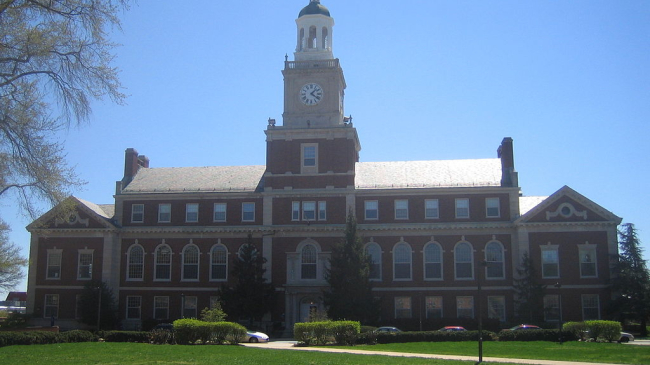

PhD students Daryl Sibble and Marisa Litz have been selected as the first cohort for a new graduate pilot program with the National Oceanic and Atmospheric Administration (NOAA) Educational Partnership Program (EPP). The two students are the first to be awarded the EPP - Graduate Research and Training Scholar (GRTS) award, which is designed to support graduate students during extensive research opportunities at NOAA facilities and other research institutions.
Daryl is a Ph.D. candidate majoring in Environmental Science at Florida A&M University (FAMU) - the lead institution of the NOAA's Environmental Cooperative Science Center (ECSC). His research focuses on how the fluxes and deposition of ammonia (NH3) affect the health and functionality of certain ecosystems. His dissertation research is advised by Dr. Elijah Johnson and co-advised by Dr. Marcia Owens, both of FAMU. Daryl will be interning and conducting the majority of his research at the Atmospheric Turbulence and Diffusion Division of the NOAA OAR Air Resources Laboratory, located in Oak Ridge, TN. Daryl's NOAA mentor is Dr. LaToya Myles, a physical scientist with an extensive background working with ammonia. LaToya is also a former EPP Graduate Scientist and FAMU graduate, and will serve on his graduate supervisory committee.
Dr. Myles and Daryl will be part of a research team collaborating with the University of Illinois to measure NH3 concentrations above and within a vegetative canopy in an agricultural environment. Measurements will be used to calculate the fluxes and deposition rates to compare actual values to the predicted values calculated through modeling. The goal is to improve the overall accuracy of the models for areas where environmental conditions and/or lack of resources render traditional sampling methods impracticable and to support large scale watershed management.
Marisa is a PhD student in Fisheries Science at Oregon State University (OSU), a partner of the Living Marine Resources Cooperative Science Center (LMRCSC). The LMRCSC was established at the University of Maryland Eastern Shore to support the research priorities of NOAA's National Marine Fisheries Service (NMFS) and the goals of EPP through cutting edge research and training of students for careers in fisheries.
Marisa will spend her internship conducting research at the Hatfield Marine Science Center (HMSC), a facility located on the Oregon coast approximately 50 miles from OSU's main campus. Marisa will work with NOAA senior scientist Dr. Richard Brodeur of the Northwest Fisheries Science Center's Estuarine and Ocean Ecology Program on a bioenergetics model to better understand how juvenile salmon growth rates respond to climate change. To accomplish this goal, Marisa will rely on a data-rich NOAA time series of juvenile salmon diet and environmental variables collected between 1980-1985 and 1998-2012. The model will be developed with input from additional NOAA sponsors from the Northwest Fisheries Science Center, the Great Lakes Environmental Research Laboratory, and the Northeast Fisheries Science Center Salmon Team. Marisa's research contributes to the overall goal of better understanding some key relationships between climate, oceanography, and biology that largely determine the fate of salmon entering the ocean during specific years.
Science and research training opportunities such as the EPP-GRTS pilot program that Daryl and Marisa participate in are critical to enhancing science, technology, engineering, and math (STEM) experiences for students, particularly from underrepresented communities. Training opportunities such as the GRTS are essential to increasing the number of students who successfully select and pursue STEM degrees and careers.



